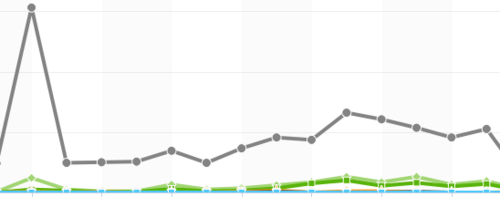Home
The Mailjet Blog
Email best practices
How to Measure the Performance of Your Transactional Emails?
Email Best Practices
How to measure the performance of your transactional emails?
Delivering emails is one thing. Tracking and analyzing them is another, perhaps more important, as it allows you to improve your delivery.

PUBLISHED ON
To measure a newsletter's performance and compare it to previous campaigns is clearly a beneficial practice. On the other hand, broaching the subject in regards to transaction emails is…less obvious.
This is less evident because transactional emails are typically sent from a system that does not support tracking (CMS or others). But also, it often stems from a lack of interest, as no one concerns themselves with their performance.
Nevertheless, by measuring the effectiveness of your transactions, it is possible to optimize your transactional emails and generate additional sales. If optimization is a topic for another article, let us consider the different measurement points for transactional emails.

Measuring points
Number of emails sent: Much more than a newsletter, the number of emails sent is an indispensible metric since it depends on the number of transactions generated. This is a key indicator of the level of activity of your business.
Opening rate: This is the most obvious measure when it comes to confirmation emails. But beware, the opening rate is measured only when the images are displayed in the email. The results shown are consistently below the actual number.
Click rate: Depending on the type of transaction analyzed, the click rate will be very different. It is interesting to categorize the different types of links in order to distinguish the clicks related to the transaction, clicks for promotions and clicks for product recommendations. In this way, you can distinguish the performance of your different calls-to-action.
Return on investment: This is a measure that is very rarely done with transactional email. And yet, if you add value to them with recommendations or promotions, it is essential to evaluate their performances.
Data representation

As we have seen, the different measuring points for transactional emails are the same as those used for analyzing marketing emails. When you send a newsletter, you are able to view the results after a week. For transactional emails, it’s very different. Indeed, as they are sent continuously, it is difficult to draw definitive conclusions based on the results. The analysis should be done on a different basis.
It is particularly interesting to study the seasonality of transactional email to detect factors influencing the analyzed results. To analyze this seasonality, it may be beneficial to visualize the results on a graph aggregating data each week. This weekly data will then be compared to various factors that can influence campaign performances (specific actions, vacation, holidays…).
In conclusion, the main focus of statistical analysis of transactional emails lies in the performance variations between different types of emails and the level of response (opens, clicks…), but also across a period of time.








